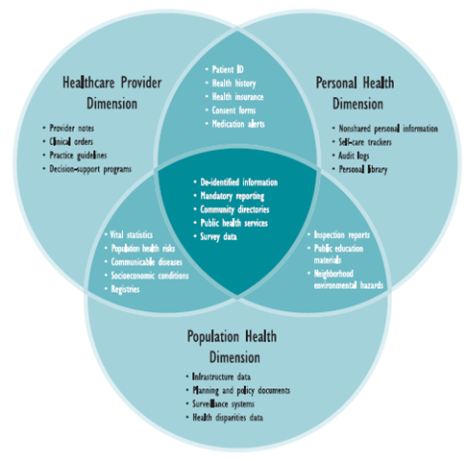
Personal Health Record rEvolution
As hospitals and healthcare systems move toward establishing “meaningful use” of electronic health records (EHR
Personal Health Record rEvolution
As hospitals and healthcare systems move toward establishing “meaningful use” of electronic health records (EHR), one of their primary objectives remains engaging patients and families in their health care. Personal Health Records (PHR) and related technologies can further this objective. While an EHR is maintained by an institution, a PHR contains health data that is curated by an individual patient. The intention of a PHR is to provide a complete and accurate summary of an individual’s medical history which is accessible online. PHR data can be accessed via a free standing vehicle, as in the soon to be defunct Google Health, or in a format that is linked to an existing EHR.
According to the National Committee on Vital and Health Statistics, key potential benefits of PHRs include:
- Support wellness and preventative care
- Strengthen communication with providers and improve understanding of health issues
- Increase sense of control over health and access to personal health information
- Support healthcare decisions and responsibility for care
- Verify accuracy of information in provider records
- Support home monitoring for chronic diseases
- Support understanding/appropriate use of medications and reduce adverse drug interactions and allergic reactions
- Support continuity of care across time and providers
- Manage insurance benefits and claims
- Avoid duplicate tests
- Provide convenience via online appointment scheduling and prescription refills
- Increase access to providers through e-visits
Despite these tremendous benefits, a recent survey found that only seven percent of Americans had used online personal health records, and less than 3.5 percent used them with any frequency. So what can be done to boost the use of personal health records? According to Ross Koppel, Chair of the Evaluation Working Group for the American Informatics Association:
- Instead of requiring patients to be data entry clerks, we should encourage (require?) healthcare technology vendors to agree to common data formats and use rules that would allow information to automatically flow from doctors’ offices, labs, and hospitals into patient’s personal health records. At the same time, we must recognize that some information is best conveyed in person by experienced medical professionals. Just because we can send information instantly doesn’t mean it’s always a good idea to do so.
- The automatic flow of data would make these systems far more user friendly, especially to the elderly and sick. Freed from data entry duty, the health records software could focus on presentation of information with better graphics. We need to make visualizing healthcare information easier and therefore easier to understand.
- We need to alter privacy rules so physicians can safely respond to patients’ email questions while protecting sensitive information. Telephone use norms emerged slowly, eventually encompassing even cell-phones. Emails via healthcare-system websites are considered safe, but all other emails travel on legal quicksand.
- Insurance companies will have to figure out how to reimburse doctors for reviewing and responding to patients’ emails. When patients view their information via the internet, they are going to have questions; and not every question requires an office visit. The same process that provides instant information can facilitate fast responses.
Assuming that these road bumps can be overcome and patients seize the opportunity to access their personal health record, how does the information become actionable and not a lifeless repository? Perhaps, the time for a true revolution…not just evolution, has arrived.
Principle Healthcare Associates is an expert resource and dedicated advocate for Nurse Practitioner, Physician Assistant, Physician and Healthcare Executive job seekers. With many years of recruiting experience, we deliver strategies to help clients identify diamonds in the rough and candidates stand head and shoulders above the competition.
*graphic courtesy of the National Committee on Vital and Health Statistics